Cleopatra - 'The Search for the Last Queen of Egypt' Exhibition in L.A.
Posted on Sep 10, 2012 in category
Cleopatra VII, the last Ptolomaic ruler of Egypt, was officially known to her Egyptian and Greek contemporaries as:
1. Cleopatra
2. Thea (goddess) = The Divine (also the Sage)
3. Philopator (e.g. Mer it es) = She who loves her father/ Beloved of her father
4. Sat Geb = Daughter of the god, Geb.
Another official translation of her titles include this Hermonthis inscription:
"The female Horus, the great one, mistress of perfection, brilliant in counsel, the mistress of the Two Lands, Cleopatra, the goddess who loves her father."
- from John Tait's, "Cleopatra by Name" in S.Walker and S-A Ashton's (eds.), Cleopatra Reassessed, (British Museum Paper, no.103, 2003).
Although this inscription infers pharaonic power with the traditional reference to Horus, who was the son and successor of Osiris (mythologically, the first pharaoh of Egypt), it stops short. Only one inscription at Hermonthis mentions that she was 'King of Egypt'. Generally Cleopatra preferred to portray herself as a protectress queen and a goddess, especially 'Nea (new) Isis'. This analogy was apt as Isis was widowed with a young child, Horus, as was Cleopatra after Julius Caesar's assassination in 44 B.C. leaving her to care for their child and heir, Caesarion.

A granodiorite statue believed to be Caesarion. He became co-ruler at the age of three with Cleopatra VII and renamed Ptolemy XV. His father Julius Caesar never publicly acknowledged him preferring to name Octavian as his heir.
Cleopatra was a Macedonian name in origin not Egyptian. It was introduced into Egypt by Cleopatra I, a Seleucid princess, who married the pharaoh, Ptolemy V in 194-193 B.C. Importantly for Cleopatra VII, she had many role models of former strong Cleopatra queens to whom she could aspire. Furthermore, in the late 1st century B.C. Cleopatra VII was not the only elite female asserting herself. Roman women like Fulvia and Livia were proactive in their husbands' political careers.
Unfortunately, our image of Cleopatra VII has been 'badly tainted' (Duane W. Roller, 2010) by over 50 ancient male writers who have collectively contributed to her stereotype of the ultimate 'femme fatale' whose lustful and indulgent ways led good Roman men astray. For example,
"She was not a humiliated (humble) woman." - Horace, Ode, 1.37.32
"...the power to subjugate everyone, even a love-sated man already past his prime (Julius Caesar)...."
- Cassius Dio, Roman History, XLII:34
"Truly that whore, queen of incestuous Canopus.."
- Propertius, The Elegies, Bk III 11:39
In fact, Cleopatra's reputation as a seductress extraordinaire seems at odds with the facts: she only had two known liaisons; namely, Julius Caesar and Marc Anthony (Roller 2010).
Over many years, Hollywood, theatre and other film producers have fuelled this popular promiscuous myth: Cecil B. deMille's 1934 classic starring Claudette Colbert, George Bernard Shaw's support for British film-makers in 1945 and of course, the 1963 extravaganza starring Elizabeth Taylor and Richard Burton which had Oscar success (4) but inadequate box office success to cover costs in that year.
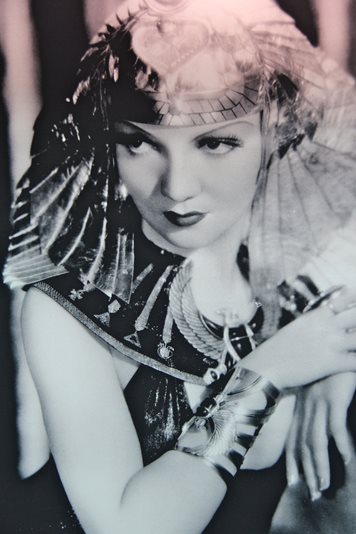
Claudette Colbert as Cleopatra (1934)
Therefore, in Cleopatra's case, the old adage 'familiarity breeds contempt' seems true; however, as Duane W. Roller states in Cleopatra. A Biography, (USA, 2010), she is "little known", "generally misunderstood" and "poorly grasped".
Her father was Ptolemy XII Auletes who was contemptuously nicknamed, 'the Fluteplayer'. He had been restored as pharaoh by the Romans in 48 B.C. leaving a considerable debt to them. In fact, Egypt's coinage suffered debasement under her father Auletes with the silver content of the tetradrachm reduced to 84%; the trend continued under Cleopatra (between 64% and 36%). Debasement of coinage is a strong indicator of economic problems faced by Cleopatra VII. Perhaps the biggest economic problem she encountered was drought. When the Nile dried up so did the ruler's revenues. Several documents have survived that reveal Cleopatra's decisive responses to the bad Niles which helped no doubt to alleviate the suffering of her subjects as well as showing her diplomatic acumen.
Cleopatra VII became Queen in 51 B.C. aged only 17 years old yet in the following year she issued a strong edict that all grain had to be transported via the capital, Alexandria. A death sentence faced profiteers and informers were rewarded with a proportion of the criminals' properties - citizens 1/3; slaves 1/6 (D.J. Thompson, "Cleopatra VII: The Queen in Egypt" in Cleopatra Reassessed (London 2003). Here Cleopatra VII took decisive action to control food prices and to make sure that the population of Alexandria of about 500,000 remained fed, peaceful and supportive. In 48 B.C. she issued a law to protect cultivators from harsh prosecutions until the harvest was completed. Furthermore, a stone inscription dated 12 April 41 B.C. warns tax-collectors about making illegal tax impositions on the peasants who were working the estates of the elite close to Alexandria:
"..they are in no way whatsoever nor for any reason whatsoever to be troubled."
- C.Ord.Ptol. 75-76 in Thompson, Ibid. p33
The above laws issued by Cleopatra reveal a determined ruler who is greatly concerned about her subjects' welfare and truly earning one of her preferred titles- 'philopatris'.
A surviving papyrus from Abusir el-Melek dated 23 February 33 B.C. decrees that a Roman landowner in Egypt, Publius Canidius Crassus, be granted tax-free grain and wine concessions. It is personally written and signed by CleopatraVII!! Dorothy Thompson suggests diplomatic skill in this gesture in that Publius Canidius was a general of Marc Antony and favouring Romans like Publius with economic concessions was preferable to debt and, the worst case scenario, a Roman takeover.
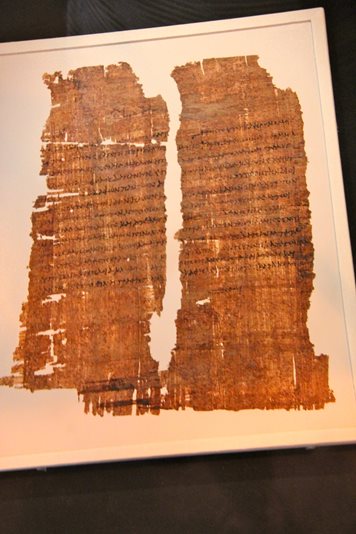
The L.A. exhibition rotates the original and its replica in order to conserve the former "delicate" artefact.
Cleopatra VII's poor Western image as a lewd lady is in stark contrast to the medieval Arab writings that depict Cleopatra VII as a great builder, alchemist, scholar, philosopher and physician especially in gynaecology. See Okasha El Daly's, "The Virtuous Scholar: Queen Cleopatra in Medieval/Arab Writings" in S. Walker and S-A Ashton's (eds.), Cleopatra Reassessed, (British Museum Paper 2003)
"She was a sage, a philosopher who elevated the ranks of scholars and enjoyed their company. She also wrote books on medicine, charms and cosmetics"
- Al-Masudi, muruj I:304 (A.D.10th century)
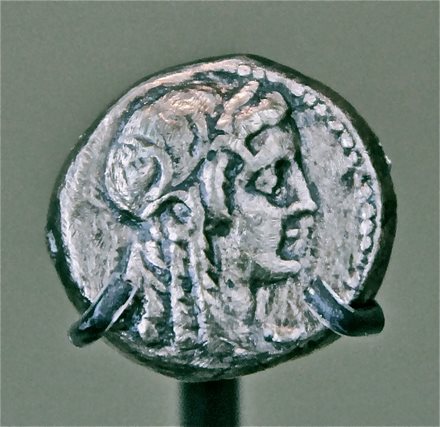
A bronze coin (51-30 B.C.) with Cleopatra VII's image found at Taposiris Magna. Cleopatra was also a talented linguist. Surprisingly, she was the first Ptolemaic ruler to learn the Egyptian language (Plutarch, Antonius, 27,4). Roller (2010) believes that Cleopatra generally continued trends and policies developed by her dynastic predecessors over a total of 250 years. These trends included the dynastic support of intellectual culture and the arts, a lack of interference into traditional Egyptian ways, a close affinity with the Egyptian priesthoods, maintaining support for the three main Greek enclaves including their privileges and the close attention to the succession issue especially the choice of partners to ensure dynastic heirs (Roller, 2010, p.36).
When considering Cleopatra VII's reputation and image it's also important to remember that in Egypt, her prominence or 'propaganda' was the norm for Ptolemaic queens who were worshipped within the cult as evidenced in temples at Dendera, Edfu, Kom Ombo and Philae. Also, Egyptian queens were accepted playing a prominent public role in 'euergetism' or benefaction towards a grateful public (S.M. Rowell, Kleopatra III: A Revisionist View, 1991).
The exhibition concentrates on the two sunken cities of Heracleion and Canopus that were excavated by Franck Goddio (1998-2002). Situated over 3 kilometres offshore from the Nile River delta in Aboukir Bay and 24 kilometres from Alexandria, these two sites played important religious and social roles during Cleopatra VII's rule. Goddio once remarked that an equivalent scene would be like Venetian canals as well as a grand harbour, temple complexes and beautiful villas strung along the canals where Strabo once saw crowds in boats dancing 'without restraint' to flutes and with 'extreme licentiousness' (Strabo, Geography, XVII:17).
The temple complexes included the Temple of Sarapis at Canopus and the Temple of Amun-gereb at Heracleion.
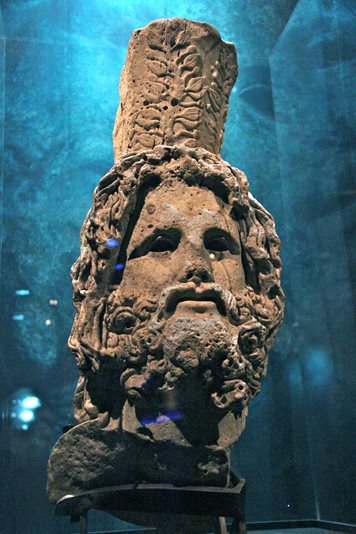
Statue of Sarapis from Canopus' temple.
Sarapis was a Ptolemaic creation combining both Osiris and Apis with Dionysos. Pilgrims sought cures from his temple and an annual festival procession travelled from this temple at Canopus along the canals to Heracleion's Temple of Amun-gereb mimicking Amun's journey across the sky. Cleopatra VII as the divine magical Isis would have been part of this important event.

The shovel (left) and simpulum (right) were excavated from Heracleion whilst the offering table is from the Canopus. Wine, honey, milk oil and juice were some of the offerings Cleopatra VII would have contributed to her cult temples.
Traders from all over the Mediterranean entered Egypt from ports like Heracleion where customs duties were charged in addition to a 'man tax' which was imposed on each sailor. A temple like the Sarapeum at Canopus would've benefitted from trade tax collections.
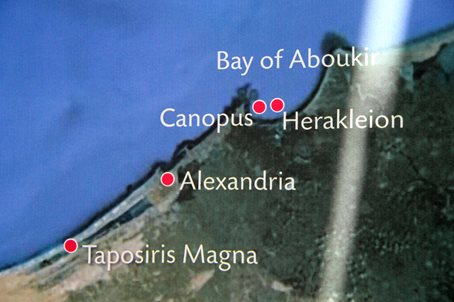
Cleopatra VII's own palace was located on an island called Antirrhodus within the Portus Magna of Alexandria. A sanctuary to Isis was located there.

A satellite map of Alexandria showing the submerged archaeological sites in yellow. The Sanctuary to Isis is located in red on the island of Antirrhodus (centre).
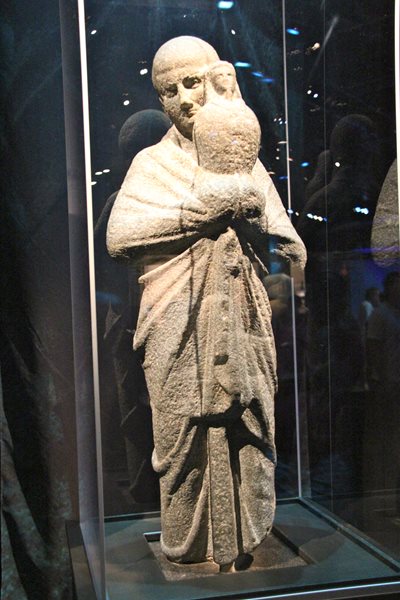
A black granite statue of a priest bearing an Osiris-Canopus jar in his veiled hands. It stood before Cleopatra VII's Sanctuary to Isis on Antirrhodus.
There are many 'Cleopatra wannabees' (P.Higgs 2001) in the world's museums and private collections. Robert S. Bianchi ( British Museum Paper 2003) argues that the Metropolitan Museum of Art in New York has one such forgery called 89.2.660. The cartouche chiselled on her right arm was a modern addition.

Perhaps another ' Cleopatra wannabee' statue head made from alabaster and excavated at Taposiris Magna.
Cleopatra VII continues to intrigue both academics and the general public but the academic consensus is that she was at the least, the "most dynamic of women" being an accomplished diplomat, naval commander, administrator, linguist and author (D.W. Roller 2010).